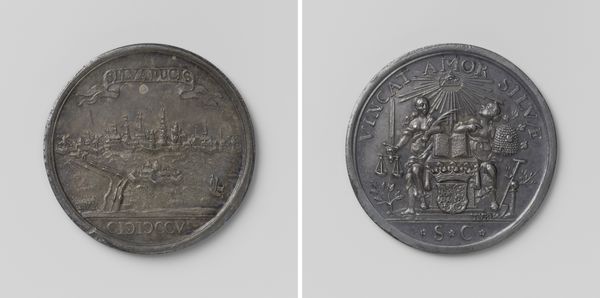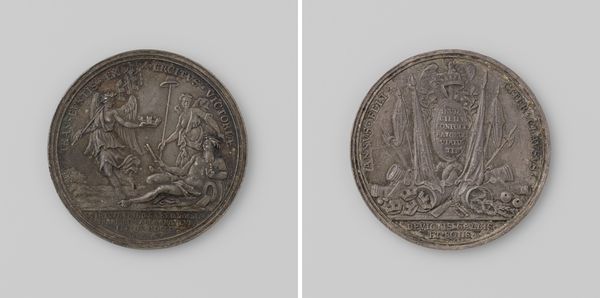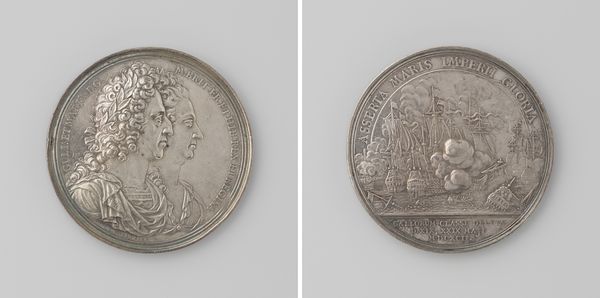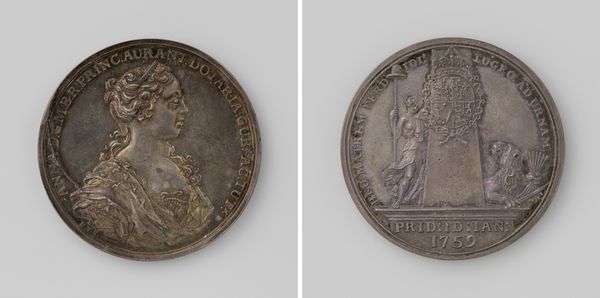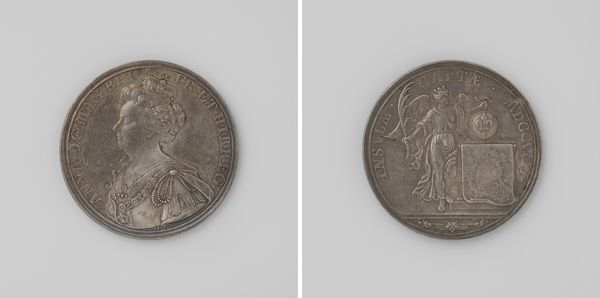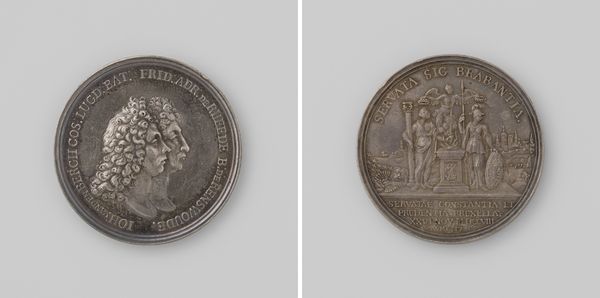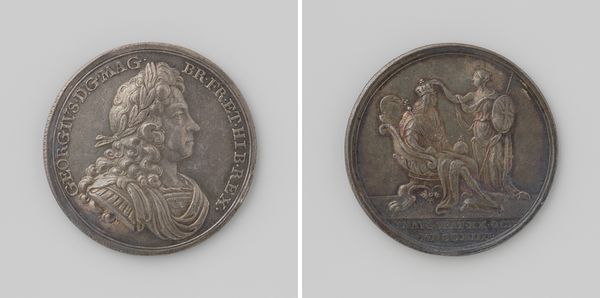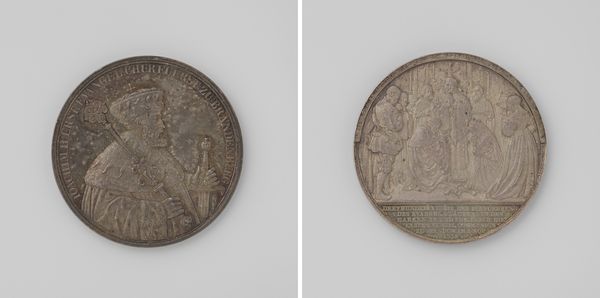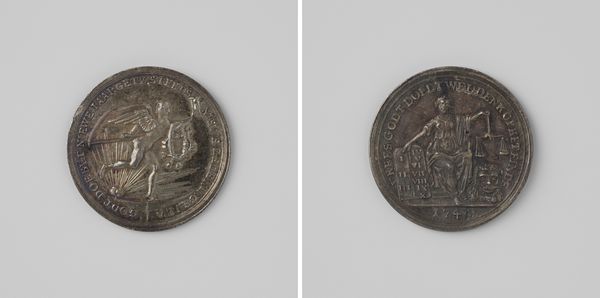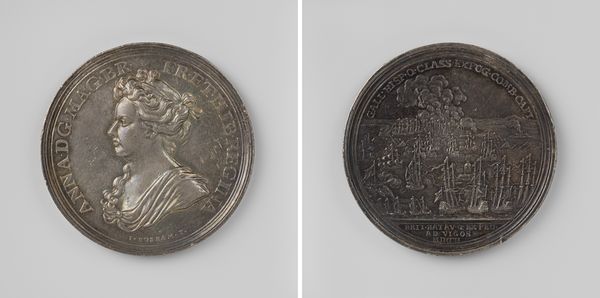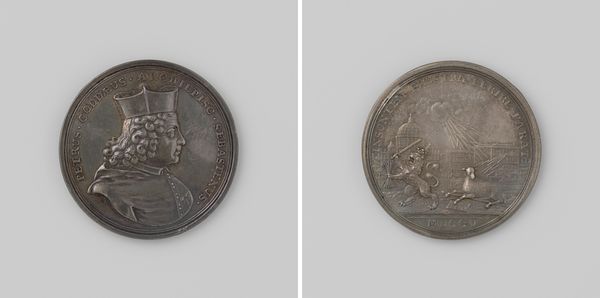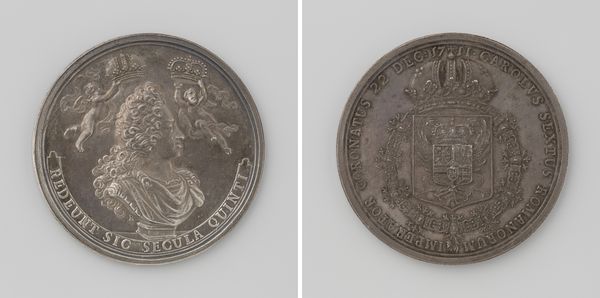
metal, sculpture
#
portrait
#
baroque
#
metal
#
sculpture
#
sculptural image
#
sculpture
Dimensions: diameter 4.8 cm, weight 46.73 gr
Copyright: Rijks Museum: Open Domain
Editor: Here we have John Croker's metal "Slag bij Zaragossa", from 1710, so a bit over 300 years old. My first thought is how a seemingly small, everyday object, like a coin, can hold such weight. I mean, what story does this Baroque piece tell? Curator: The power of numismatic art lies in its potent iconography. These aren't merely coins; they're condensed narratives designed to resonate with collective memory. Tell me, what symbols jump out at you on either side? Editor: Well, one side obviously features Anna Augusta in profile. The other side looks like… a royal court? Someone kneeling before figures on thrones. Curator: Precisely. Anna Augusta, or Queen Anne, is presented in the classical style, evoking power and stability, but it’s the reverse that holds deeper cultural resonance. We see an allegorical scene of Justice and Liberty enthroned. Who do you think that kneeling figure might represent? Editor: Possibly someone defeated, begging for mercy? Curator: Perhaps. Or, conversely, it could symbolize supplication to rightful rule. In 1710, Britain was heavily involved in the War of the Spanish Succession. This medal commemorated a victory, and victory is so often cast in these mythic, virtuous terms. Do you notice how the winged figure beside the thrones points heavenward? Editor: Yes! Towards that banner overhead: "Libertatis Proe[li]catis". For Liberty Won. Curator: Exactly! Consider the psychological impact: holding this tangible symbol of victory, citizens were meant to internalize the triumph, weaving it into their understanding of national identity. Metal was purposefully used to signify permanence and supposed indestructibility. Editor: So, it's more than just currency; it's about controlling a message and crafting the nation's image through repeated symbols. That’s fascinating. Curator: Indeed. We’ve unearthed how even the most ordinary artifacts can conceal extraordinary symbolic meaning and intention, resonating with deeply held values.
Comments
No comments
Be the first to comment and join the conversation on the ultimate creative platform.

